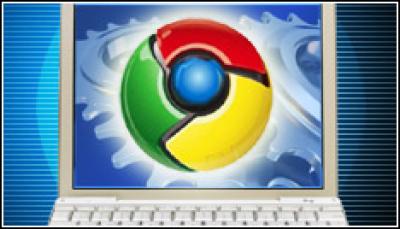Review: Google Chrome OS Developer Edition

The developer edition of Google Chrome OS is almost identical to the Google Chrome web browser, providing an intriguing look into the world of web-only computing
Back in the mid-1990s Microsoft took on Netscape, not to dominate the web browser market but because Microsoft was afraid that the Netscape browser could become a threat to Windows – that the web browser itself could become an operating system.
Now, more than 10 years later, we are finally getting a look at what it would be like if the web browser was the operating system. Because that is exactly what the Google Chrome OS is, at least in the early developer version that was recently released: The Google Chrome web browser is, for the most part, the only interface for the Google Chrome OS.
In fact, if you want to get a good feel for what it would be like to use Chrome OS, just fire up the Chrome browser and use it for all of your computing tasks for a day. By doing so, you’ll experience about 90 percent of what the Chrome OS has to offer.
In fairness, this is a very early look at the Chrome OS; in many ways, it is essentially pre-alpha. The OS could change significantly before its expected release at the end of next year, but this developer release does raise some intriguing issues about an operating system with which nearly every task happens on the web.
Click here to see a slide show of the Chrome OS developer edition.
According to statements by the company, Google does not plan to release Chrome OS as a stand-alone operating system, but instead plans to partner with OEMs to deliver Chrome OS on netbooks and other devices. But Chrome OS is an open source project, so it is possible that others will build versions of Chrome OS that can be downloaded and installed on any system.
To test the developers release of Chrome OS, I downloaded the source code from the main Chromium site at www.chromium.org/chromium-os and built it on an Ubuntu VM that I had running. I also downloaded a pre-built image of Chrome OS from the Internet and loaded it onto another virtual machine. (The latter may be the easier way to get Chrome OS for most interested parties.)
When you first launch the Chrome OS, you are presented with a simple login screen. If you already have a Gmail account, you can use those login credentials to start up Chrome OS.
Once Chrome OS is launched, you see what is essentially a standard Chrome web browser screen. However, a unique button appears in the upper left-hand corner of the screen. Clicking this button launches the Applications page, one of the few aspects of this developer build that is different from the Chrome browser. Within this page is a pre-set list of applications that can be launched within Chrome OS. These include the Google applications you’d expect, such as Gmail, Google Apps, Calendar, Picasa and YouTube. However, the list also includes Web applications such as Yahoo mail, Pandora, Hulu, Facebook and Twitter.
Since most of these applications are web-based, launching them from this Applications screen will simply launch a tab within the browser with the application running within it. However, the list does include a couple of system-based applications. These include a very simple calculator that, when launched, runs in the lower-left corner of the screen. When minimized, the calculator app appears as a box anchored to the same corner.
A couple of the applications required a Google.com login to run, which means that – at least for now – you pretty much have to be a Google employee to test them.
It looks like users will eventually have the ability to customise the Applications page, as the Create Application shortcut link in the browser included an option to add to the Applications menu. However, I was unable to get this to work in my tests of the developer build.
There are only a few other small areas of the Chrome OS that lead a user to believe that he or she is running a new operating system and not just a full-screen Web browser. Three icons in the upper-right corner of the screen offer basic system information and settings option. When clicked, one icon displays information on system battery life, the second lets users set up networking options for wireless and wired networks, and the third essentially brings up the same options that are included in the Chrome Web browser tools menu. (One small difference is a tab lets users control options for touchpad sensitivity and time zone.)
Outside of these options, the rest of the settings were pulled directly from the browser settings. There was even an option for choosing another browser to be the default. This is probably just a result of pulling the menus from the browser – it doesn’t look as if Google will allow installing different browsers, or any disk-based applications, on Chrome OS systems.
A task manager was also available (by right-clicking in the title bar) that showed processes running and how much memory they were using.
All Web, All the Time
While the Google Chrome OS looked and felt a lot like the Google Chrome web browser, the developer edition provided an intriguing look at how a browser-only OS might work.
With access only to web-based applications and tools, I could perform the majority of my daily tasks. I can at least conceive of doing my computing using only web-based resources.
However, during my testing, I ran head-first into the challenge of a web-only model: For more than 2 hours during one of the days I was testing Chrome OS, I lost my Internet connection. And for those 2 hours, Google Chrome OS was useless. It turns out that without the web, a web-based operating system can’t do much.